Highlights
To determine the effects of vitamin D on muscles, researchers removed the vitamin D receptor from only skeletal muscle cells in some mice (called mVDR mice) and compared them to control animals with normal vitamin D receptors. The researchers found that mVDR mice had lighter (smaller) muscles, decreased muscle mass and grip strength, and ran significantly slower than the control mice. The researchers concluded that without vitamin D in muscle cells, the muscle cells can’t grow properly. The result is weaker mice with less muscle mass and fewer muscle fibers.
Have you ever noticed the writing on milk cartons or other products that read “vitamin D added?” There are dozens of vitamins and minerals that your body needs to function – so why
vitamin D
in particular? New research by Professor Jenny Gunton and a team of researchers at Westmead Institute for Medical Research in Sydney, Australia shows just how important vitamin D is for our health.
Dr. Gunton initially became interested in vitamin D and how it might affect
pancreatic cells
related to
diabetes.
Her team used a mouse
model
that lacked the vitamin D
receptor,
which is the protein that recognizes vitamin D and allows it to work in cells. Dr. Gunton compared mice without the vitamin D receptor to control mice with the vitamin D receptor. The researchers noticed striking physical differences in the two groups of mice. “The mice without the vitamin D receptor had very little muscle mass compared to the normal mice,” recalled Dr. Gunton. This finding began a series of experiments investigating the role of vitamin D in muscle cells.
Researchers have known for decades that the lack of vitamin D is associated with muscle weakness. This deficiency is known as
rickets,
characterized by weak and soft bones, muscle weakness, and stunted growth. However, it remains unclear why vitamin D affects muscles in this way. It could be that vitamin D has a direct effect on muscle cells. Another possibility is that vitamin D affects muscles indirectly, by regulating other compounds in the body like calcium.
To find out whether vitamin D affected muscles directly or indirectly, Dr. Gunton and her team developed an experiment where they removed the vitamin D receptor from only
skeletal muscle
cells. To do this, they used a technique called the
cre-lox system,
which involves breeding two sets of mice.
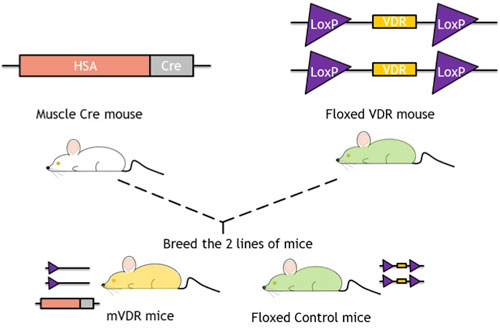
Figure 1. Picture of breeding control and mVDR mice
[Source: Prof. Gunton]
Cre mice are
transgenic mice
that contain the gene for the
enzyme
cre recombinase, originally found in bacteria. The cre recombinase enzyme recognizes and removes specific DNA sequences known as lox sites. There are different types of cre recombinase enzymes that are specific to certain genetic sequences. In this case, the cre recombinase was ‘driven’ by a gene which is active specifically in skeletal muscle cells, meaning that only muscle cells make the cre enzyme. The cre mice were bred with mice whose vitamin D receptor gene had been modified to sit between two lox sites. When the cre mice and lox mice were bred, the result was mice who were lacking the vitamin D receptor only in skeletal muscle cells (mVDR mice).
It is important to note that these mVDR mice had normal vitamin D receptors in all of their other cells except for skeletal muscle cells. This is distinct from the first type of mouse that Dr. Gunton and her team studied that lacked the vitamin D receptor in all cells throughout the body.
Dr. Gunton and her team performed various tests with the mVDR mice and their controls to better understand the differences between them. The researchers noticed that the mVDR mice had smaller muscles than the control mice.
The researchers quantified the muscle mass of the mice using a small bone and body composition scanning machine and found a decrease in lean mass at 70.3% compared to 77.9% in controls. There was no difference in body weight.
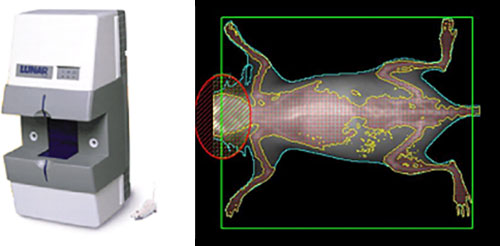
Figure 2. Picture of bone and body composition scanning machine
[Source: https://www.med.unc.edu/bric/small-animal-imaging/sai-modalities/dexa/]
The researchers tested the grip strength of the mice using a horizontal bar that measures force. The mice were lifted by their tails (it doesn’t hurt them) and placed so that their front paws gripped the bar. The researchers then slowly pulled the mouse sideways until it couldn’t hold on anymore.
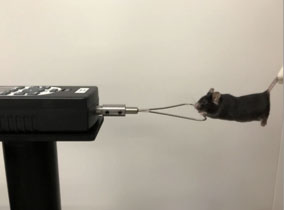
Figure 3. Picture of grip strength apparatus
[Source: Ms. Jennifer Chen]
Each mouse was tested in three sets of five times each, for a total of 15 tests. The researchers averaged the test results and adjusted for mouse weight to get an accurate reading of grip strength. The results showed that the mVDR mice had between 7 and 16% less grip strength than the controls.
Finally, Dr. Gunton and her team conducted chemical experiments on the muscle fibers to identify the composition of muscle cells of the different mice. Most cells are colorless, so they have to be dyed in order to become visible. The researchers used two types of chemical stains to visualize the muscle tissue. Hematoxylin and eosin staining
(H & E)
is a common visualization method. Hematoxylin stains the cell nuclei blue while eosin stains the
cytoplasm
and other tissues pink. To better visualize muscle cells in particular, the researchers used a second type of staining with Sirius Red and Fast Green dyes. The Sirius red dye binds to
collagen,
the structural proteins in muscle fibers, while fast green dye binds to other proteins in the muscle cells.
The results of the chemical staining were surprising. “Even though the overall size of the muscles in the experimental mice was only reduced by 15%, we found that the number of muscle fibers had decreased by 40%,” explained Dr. Gunton. In other words, the individual muscle cells were bigger, but there were many fewer of them.
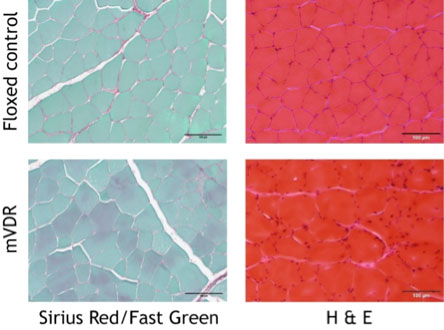
Figure 4. Sirius Red and H&E staining in control and mVDR mice
[Source: Prof. Gunton]
Vitamin D is what is called a
transcription factor,
meaning that it helps regulate the expression of a variety of genes. For this reason, the researchers also measured changes in gene expression in the mVDR mice. They found significant decreases in several genes that regulate calcium, which might explain why the mVDR mice fatigue more easily.
Additional experiments the researchers performed tested the activity level of the mice. Each mouse was put in its own cage with food, water, toys, and a running wheel. The mice were allowed to adjust to the new environment for 24 hours and then monitored for 24 hours to see how fast and how long they chose to run on the running wheel. Although there was no difference in the amount of time spent running, the researchers found that the mVDR mice ran significantly slower with an average distance of 22% less than the control mice.
There are several reasons why mice without vitamin D in their muscle cells might engage in less activity. If their muscles are weaker, they might get tired faster, and therefore do less exercise. Alternatively, the lack of vitamin D in muscle cells may make the mice feel more tired, causing them to do less exercise. So far, the researchers don’t have a conclusive answer to that question.
Together, these results show that without vitamin D in muscle cells, muscle cells can’t grow properly. The result is weaker mice with less muscle mass and fewer muscle fibers. These results mirror findings about vitamin D deficiency in humans. One study showed that people with lower activity levels tend to have lower vitamin D levels.
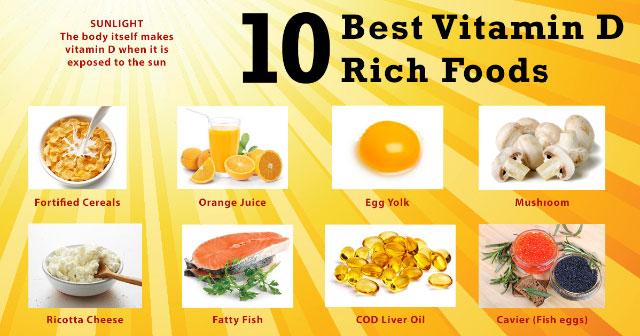
Figure 5. Foods rich in vitamin D
http://www.myjoyonline.com/lifestyle/2018/June-16th/guide-to-vitamin-d-benefits-sources-.php
Based on results from human studies, it is unclear whether simply reversing vitamin D deficiency can restore muscle function quickly. People with vitamin D deficiency are more likely to have weaker knees, weaker grip strength, and frequent falls. However, just giving these people vitamin D won’t reverse these effects in the short-term. This is because it’s not just that the muscle cells aren’t working as well without vitamin D, but that without vitamin D you actually lose muscle mass. The way to regain muscle mass is by doing exercises to strengthen the muscles. Fixing the low vitamin D level may also help.
In a future experiment, Dr. Gunton plans to give the mVDR mice pain medicine to see if it makes a difference in their activity time. This will help the researchers determine whether the reduced activity seen in the mice is due to fatigue, sore muscles or some other cause.
Vitamin D is important throughout the lifespan to maintain healthy muscles and bones. In Australia, where Dr. Gunton lives and works, vitamin D deficiency is estimated to affect one-third of the population. In the United States, many products – like milk – have added vitamin D, so vitamin D deficiency isn’t as severe. Still, it is possible to not get enough vitamin D. “This is especially true because vitamin D requires sunlight to activate. If you’re not spending enough time outside, you may be getting less vitamin D than you need,” remarked Dr. Gunton.
Dr. Jenny Gunton is Professor of Medicine at Westmead Clinical School and Director of the Centre for Diabetes, Obesity, and Endocrinology at the Westmead Institute for Medical Research in Sydney, Australia. Her research focuses on diabetes, obesity, and vitamin D. When not in the laboratory, Dr. Gunton enjoys spending time with her family.
For More Information:
- Girgis, C. et al. 2019. “Mice with myocyte deletion of vitamin D receptor have sarcopenia and impaired muscle function.” Journal of Cachexia, Sarcopenia and Muscle. https://onlinelibrary.wiley.com/doi/full/10.1002/jcsm.12460
- Gunton, JE and Girgis, CM. 2018. “Vitamin D and muscle.” Bone 8:163-167. https://www.ncbi.nlm.nih.gov/pubmed/29963601
To Learn More:
- “Vitamin D Deficiency.” https://my.clevelandclinic.org/health/articles/15050-vitamin-d--vitamin-d-deficiency
- “Recognition and Management of Vitamin D Deficiency. https://www.aafp.org/afp/2009/1015/p841.html
- “Vitamin D deficiency soars in the U.S., study says.” https://www.scientificamerican.com/article/vitamin-d-deficiency-united-states/
- The Vitamin D Society. https://www.vitamindsociety.org/
- “Vitamin D.” https://ods.od.nih.gov/factsheets/VitaminD-HealthProfessional/
Written by Rebecca Kranz with Andrea Gwosdow, PhD at www.gwosdow.com
HOME | ABOUT | ARCHIVES | TEACHERS | LINKS | CONTACT
All content on this site is © Massachusetts
Society for Medical Research or others. Please read our copyright
statement — it is important. |

